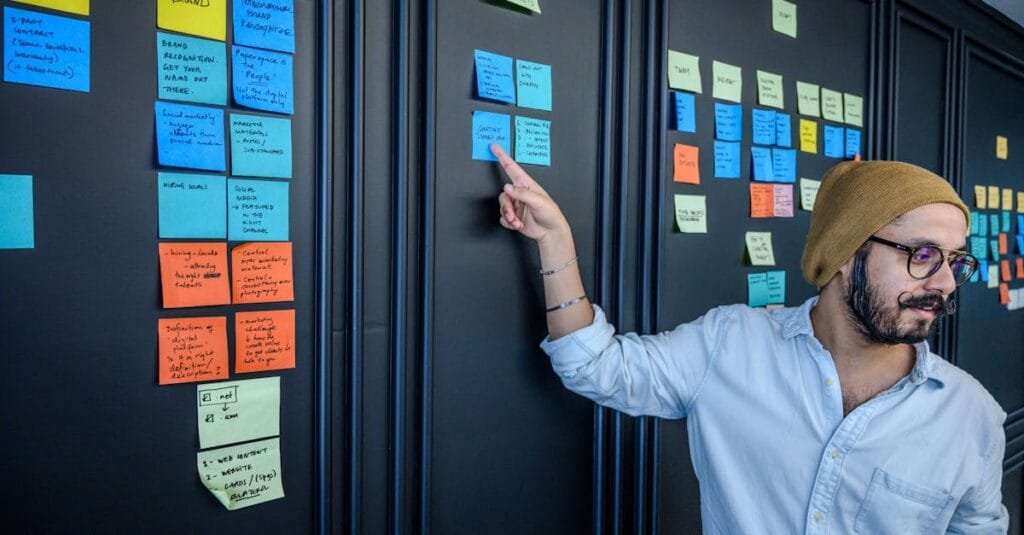Feeling Stuck in Your Shared Services Transformation?
Ever look around your shared services team and feel that something’s just… off?
The processes feel clunky. Communication is a game of broken telephone.
You wonder, how do we get out of this rut?
You’re not alone.
Many teams grapple with this, feeling the weight of inefficiency.
Here’s the good news: there’s a way to shake things up and turn that ship around.
Design Thinking for Shared Services Transformation
Enter design thinking—a powerful tool that’s been a game changer for countless industries.
It’s not just about fancy design or techy ideas; it’s a mindset.
It’s about getting in tune with your users—your team, your customers, and making things better for everyone involved.
So how do you weave this approach into your shared services transformation? Let’s break it down.
1. Empathize: Get Close to Your Users
The first step in design thinking is empathy.
Sounds cliché, right? But hear me out.
If you want to transform shared services, you need to truly understand the challenges your people face daily.
This means stepping into their shoes and getting their story.
Here’s how:
- Conduct interviews—real, face-to-face conversations.
- Observe your team in action, watch the workflow, and see where it stalls.
- Create personas—these are fictional characters that represent your users. Think of their needs, goals, and frustrations.
Once you’ve got this down, you’re on your way to crafting solutions that actually make a difference.
2. Define the Problem Together
After you’ve gathered insights, it’s time to define the problems clearly.
Don’t just spitball ideas in a meeting.
Engage your team in this part of the process.
They’re your front-line soldiers; they know the battlefield better than anyone else.
Bring everyone together:
- Host brainstorming sessions.
- Use sticky notes or digital tools to map out problems and ideas.
- Prioritize the pain points that need the most immediate attention.
When the team agrees on the issues, it builds a strong foundation for innovation.
3. Ideate: Generate a Flood of Ideas
Now comes the fun part—ideation.
Don’t hold back; let the creativity flow.
Get wild with your thoughts.
It’s not about finding the right answer immediately; it’s about flooding the room with possibilities.
Try these techniques:
- Brainwriting—everyone writes their ideas down.
- Sketching—yes, even doodling can inspire solutions.
- Mind mapping—visualize connections and relationships.
In this phase, quantity trumps quality.
Just keep the ideas rolling in.
4. Prototype: Experiment, Don’t Overthink
You’ve gathered a mountain of ideas, now it’s time to turn a few into something tangible.
Yeah, I get it—there’s a fear of wasting time on something that won’t work.
But prototypes don’t have to be perfect; they just need to be *good enough* to test your assumptions.
A prototype can be anything from:
- A flowchart of the new process.
- A role-playing session to see how a new process feels in practice.
- A basic model of software or tools you might want to implement.
The key? Get feedback ASAP.
This helps you refine and tweak until you’re closer to a winning solution.
5. Test: Iterate Until It Clicks
Testing is where the rubber meets the road.
You’re not just checking if it works; you’re diving into how it affects everyone involved.
Here’s where continuous improvement shines.
Gather the troops—your testers, the end users.
Let them interact with what you’ve created:
- Collect feedback—what works, what doesn’t?
- Make adjustments—involve users in refining the process.
- Be open to change—sometimes, the best ideas come from unexpected sources.
This iterative process is essential.
It keeps you moving forward and ensures you’re not stuck in old habits.
Bringing It All Together
By harnessing these design thinking techniques, you’re not just transforming shared services.
You’re transforming the culture around them.
You’re fostering innovation and teamwork, while also delivering real, tangible results.
The Supplier of Shared Services Transformation Insights
If you’re ready to take the plunge into shared services transformation, I invite you to check out
THEGBSEDGE blog.
There, you’ll find enriching insights on everything from strategy and leadership to technology innovations and process excellence.
Consider it your go-to resource for all things shared services.
Start Your Transformation Journey
Are you ready to elevate your shared services?
With design thinking as your compass, the journey ahead is full of possibilities.
Approach this transition with an open mind and a willingness to adapt, and you’ll be surprised at the results.
Let’s stop paddling upstream and get back into the flow of what works.
Stay curious, keep learning, and push for that transformation your team craves.
Conclusion: Your Next Steps
Transformation isn’t a destination; it’s an ongoing journey.
You’ve got the tools now, so start integrating these techniques into your day-to-day.
Each move you make toward understanding, defining, and creating solutions brings your team closer to efficiency and satisfaction.
So what’s next on your agenda?
It’s time to roll up your sleeves and drive that shared services transformation home.


